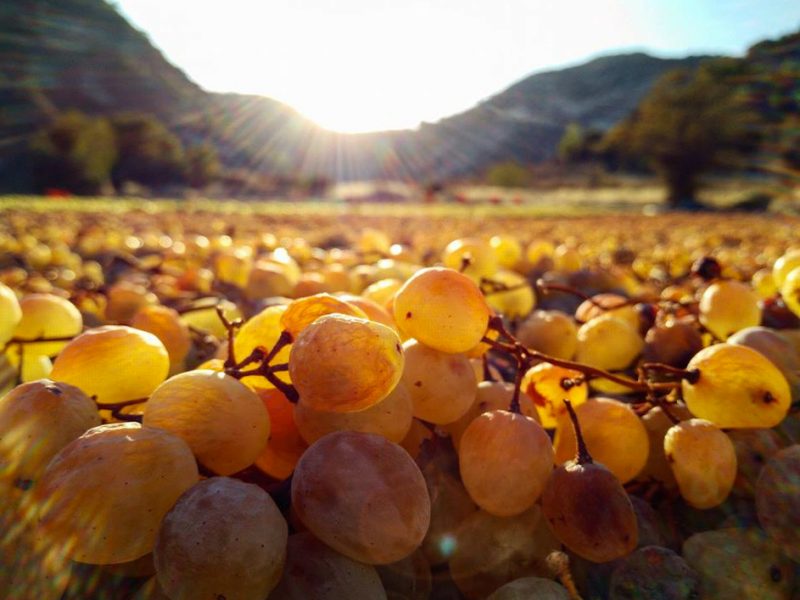An old world wine whose roots lie in the foundations of ancient and medieval history, Commandaria is a sweet dessert wine from the Mediterranean island of Cyprus.
While it may have a small market profile in Australia, its reputation has abundant room to grow, as journalist Samuel Squire writes.
The sweet dessert wine Commandaria can be backdated 6500 years although, back then, it was only known as ‘Sweet Wine of Cyprus’. According to the Cyprus Wine Museum, this is the precursor wine to modern-day Commandaria.
As far as current records show, it is one of the oldest wines in the Mediterranean. Euripides, the classical tragedian of ancient Athens, dubbed the wine as ‘Cypriot Nama’, which is synonymous with the ‘manna’ or the nectar of the gods.
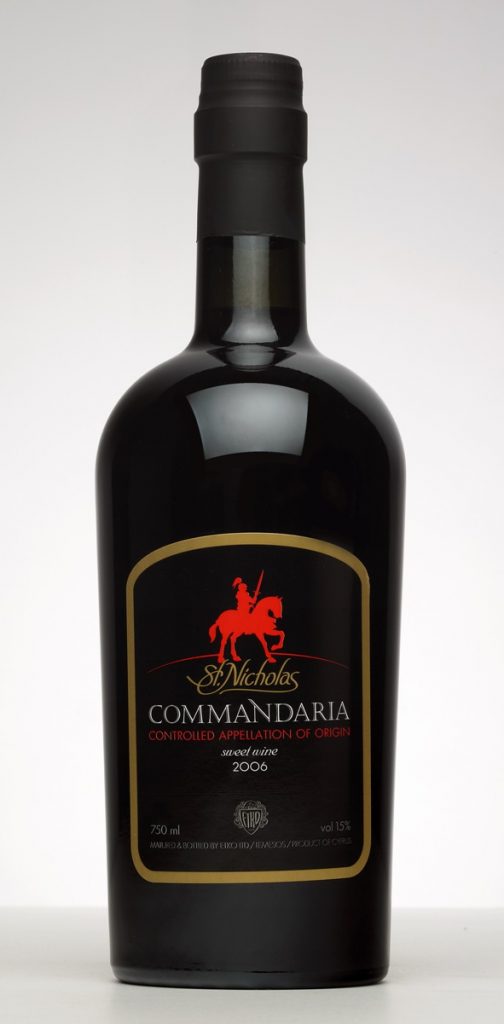
A jump forward in the wine’s history to 1191 A.D, English King Richard I, known as the Lionheart for his courage and raw strength, embarked on his third crusade into the Holy Land of Jerusalem.
Along the way, he stopped off at, and conquered, the Mediterranean island of Cyprus. During the Third Crusade, Commandaria was served at the wedding of King Richard the Lionheart and Berengaria of Navarre in the town of Limassol.
During his wedding, The Lionheart pronounced Commandaria to be “the wine of kings and the king of wines”.
Near the end of the century, King Richard sold the island to the Knights Templar, a band of fiercely devoted warrior priests, who subsequently sold it to Guy de Lusignan and kept a large feudal estate at Kolossi, close to Limassol, to themselves.
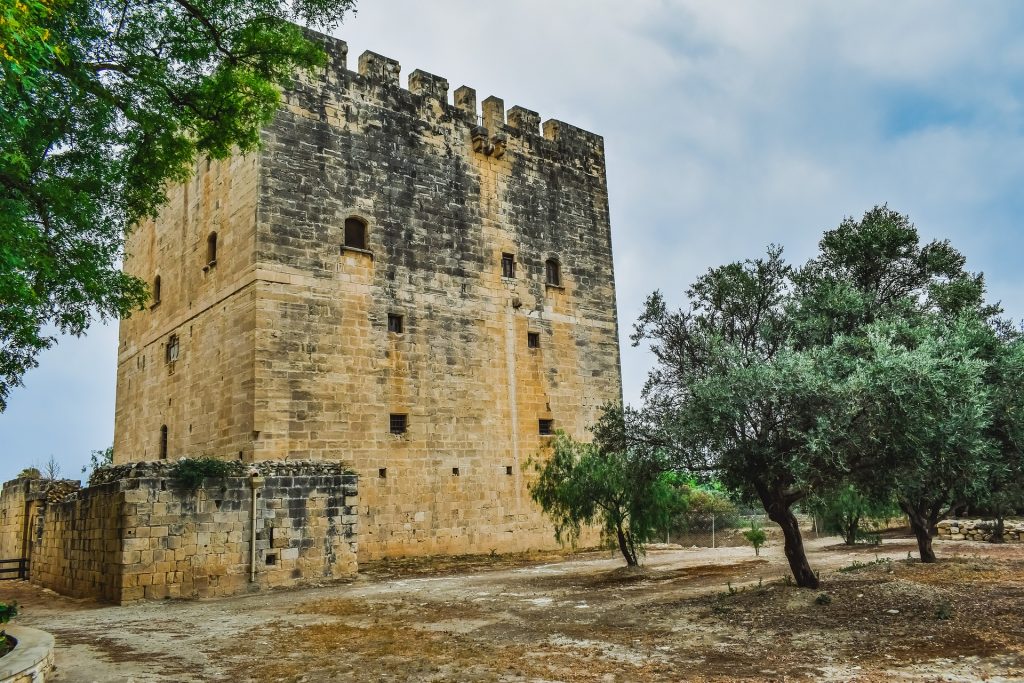
This estate is where Kolossi Castle remains to this day and was referred to as “La Grande Commanderie”. The knights loved the local wine, and decided to name it ‘Commandaria’ as a nod to their newfound home.
The Mediterranean wine region of Commandaria has been the home of the rich, fruitful, amber-hued dessert wine for thousands of years, and since 1993, only 14 villages are now legally allowed to make the wine under European Union legislation thanks to the region being formally registered as a protected name and geographical region. These villages lie in the foothills of the Troodos Mountains, just north of the Cypriot city of Limassol.
Commandaria is, traditionally, a very sweet, higher-alcohol fortified wine with distinct smoot textures. It is made using two distinct winegrapes, red Mavro grapes and white Xynisteri grapes. The Cypriot wine is both sweet and high in alcohol content, usually within 15-20 percent ABV.
The sweetness comes completely naturally through the warm, dry climate of Cyprus. The grapes, to get their high sugar content, are picked very ripe, even overripe.
They are then dried in the sun for one or two weeks to further increase the sugar content. Then, the grapes are pressed and the must undergoes a slow and long fermentation, often over 2-3 months. The winemaker can sometimes choose to increase the alcohol concentration through adding grape spirit during fortification.
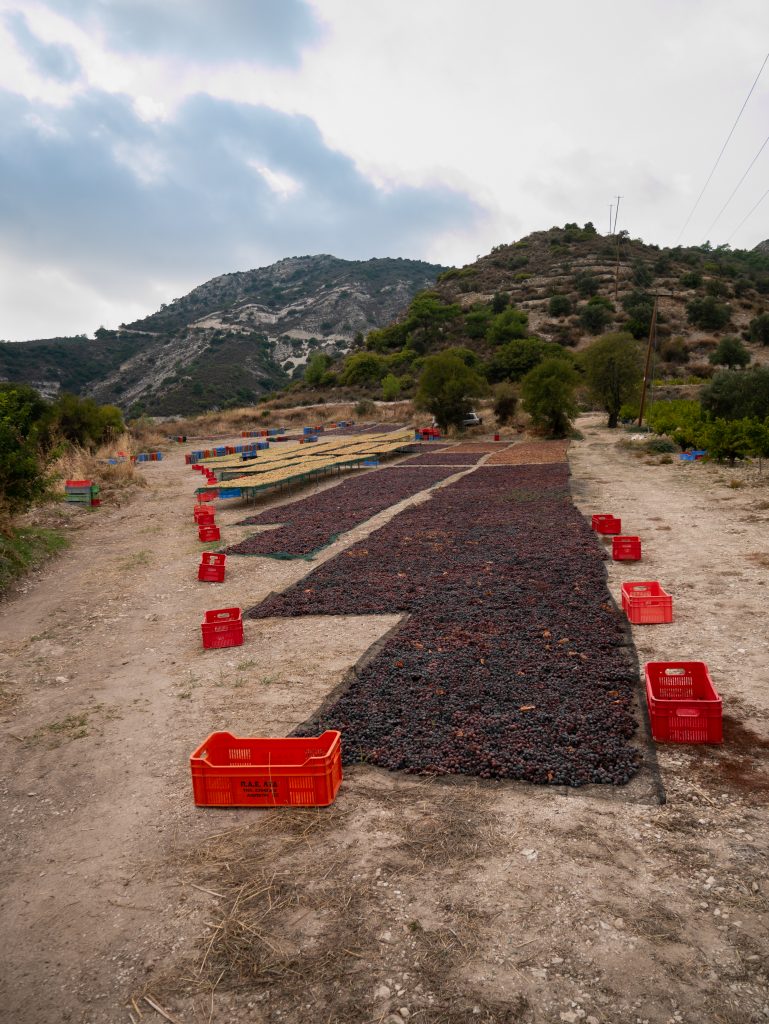
A small vintage
Only a small quantity of Commandaria is made during each vintage and thus, the wine can sometimes be difficult to get into consumers’ cellared collections. However, Australia does import a couple of different Commandaria labels: St. John’s and St. Nicholas from Keo Group and Etko Wines, respectively.
In Limassol, Cyprus, Etko Winery is one of only a handful of Commandaria producers and has been running since 1844, making it the oldest operating winery on the island nation.
Etko director, Olivia Haggipavlu says their Commandaria labels have been highly awarded at wine competitions since 1882.
Haggipavlu says the history of Cyprus may be an indicator for why there could be a link between Commandaria sweet wine and other, more notorious, fortified wines like port, Tawny Port and Sherry.
She says that the production of similar fortified wines in Europe could be connected with the fact that Cyprus has had many different invading forces attempt to conquer the island throughout the centuries.
“As Commandaria pre-exists most other fortified wines, I would think that these invaders not only enjoyed and made profit out of this wine during their rule, but they also produced similar products when they went back home,” she said.
In Australia, the market for Commandaria is relatively small at the time of writing, however Haggipavlu says Etko Winery has “managed to open doors for some of our other products, especially indigenous varieties”.
Etko has managed, through the years, to create long-term partnerships for their native wine with many countries, including: Australia, Greece, France, Germany, Sweden, Switzerland, Canada, Taiwan, Japan and Kenya.
“White Xynisteri grapes and red Maratheftiko grapes are two of the big favourites these days. Wine consumers both locally and abroad are always on the lookout for new [styles],” she said.
“Wine consumers with knowledge in wine look for character and identity, which Cypriot wines have to offer.”
Despite their iconic reputation in their homeland, there is a surprisingly low awareness of Mediterranean vine varieties domestically in Australia.
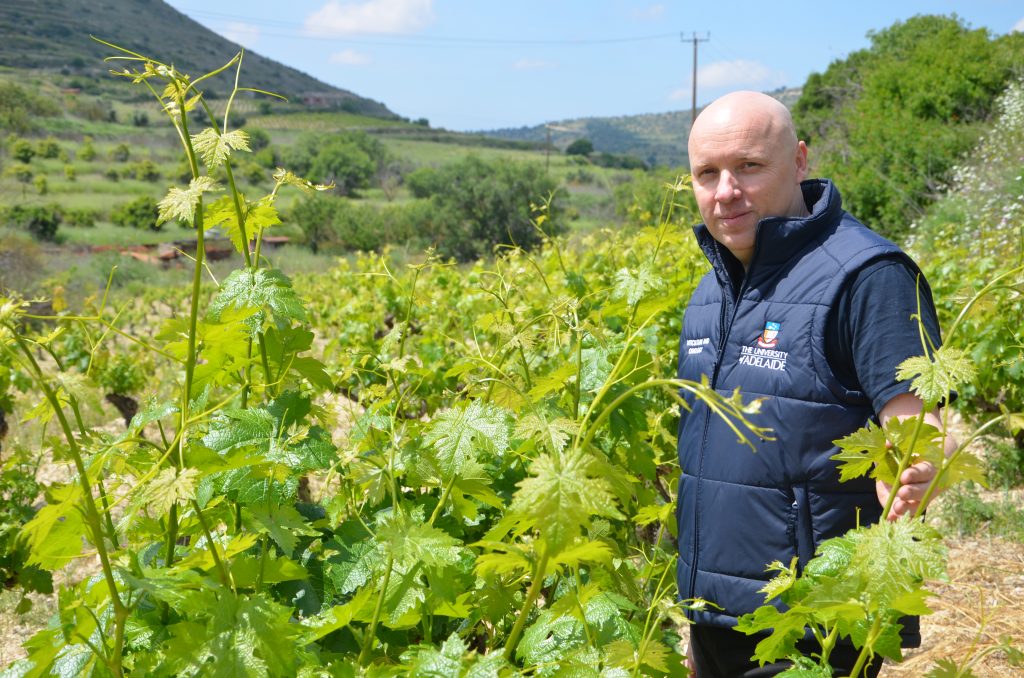
Cypriot vines in Australia
However, the tip of the Cypriot iceberg may soon be revealed as some of the island’s native vine species, red Maratheftiko and white Xynisteri, have recently been imported to Australia in an effort to combat the increasingly challenging realities of climate change and gain more recognition for Cypriot wines.
The vine species, which are more suited and resilient to hotter, drier conditions were imported to the University of Adelaide’s Waite campus in South Australia recently and released from quarantine in 2019.
Wine researchers at Adelaide University investigated drought-tolerant grape varietals and found that Cypriot vines fitted the bill, and have since had them planted here under trial conditions.
University of Adelaide PhD student Alexander Copper says that after his exposure to the 12 Cypriot-native vine varietals whilst working overseas, he discovered their natural resistance to heat stress.
He mentioned that the varieties are able to grow vigorously in their Cypriot homeland, surviving on only winter rainfall as most vineyards use bush vines with no irrigation.
“The varieties are very drought tolerant and grow vigorously surviving only on winter rainfall,” he said.
“The climate of Cyprus is very hot, being closer to southern Turkey, Syria and Egypt than to mainland Europe, it experiences a hot, Mediterranean/Middle Eastern climate.
“After experiencing Cypriot conditions and seeing how well the indigenous varieties grew without irrigation, I was curious as to how these varieties would perform in Australia.”
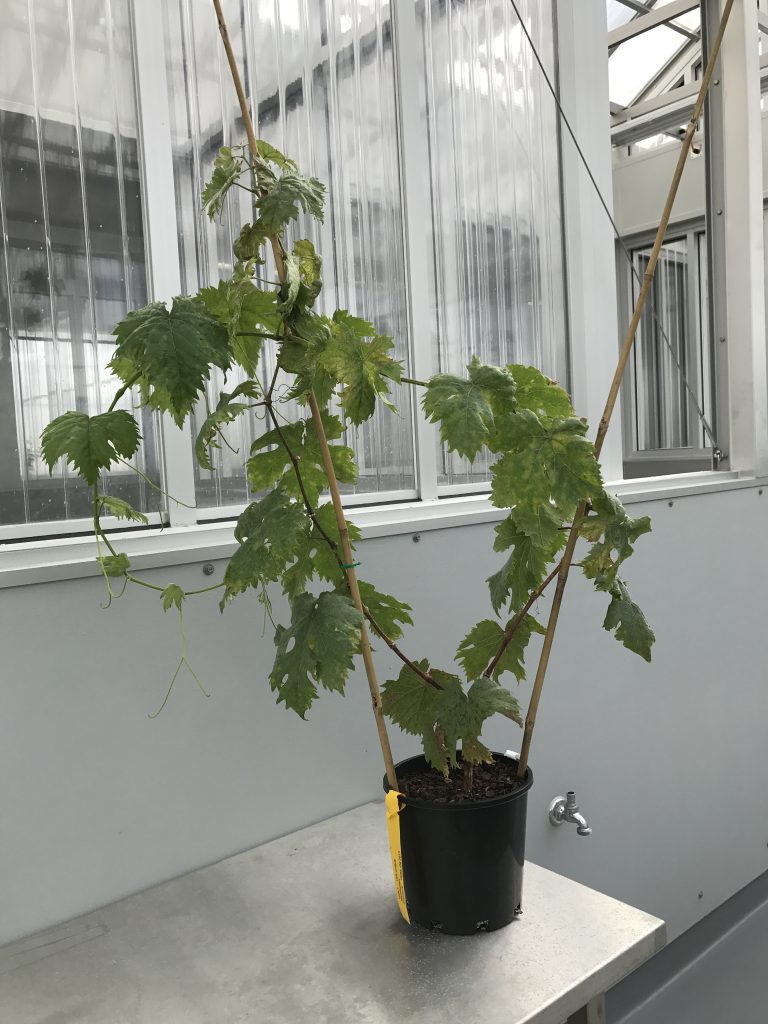
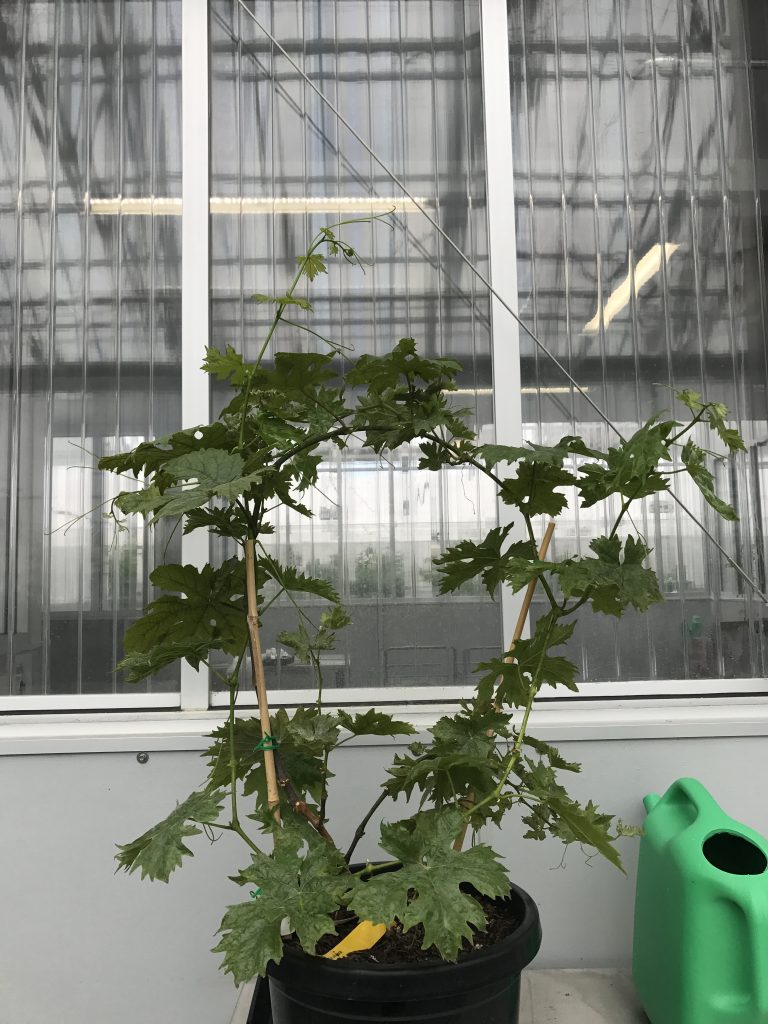
Copper says that red Maratheftiko grapes have a similar structure to Cabernet Sauvignon and the sensory characteristics of Pinot Noir. The appeal to import Cypriot varietals to Australia came from a need to improve the sustainability of Australia’s vineyards, as many vines in the country originate in European climates and Australia’s climate can prove a challenge for their survival.
In comparison for growers that might want to adopt Cypriot vines in their vineyards, Copper says the addition may prove a fruitful investment.
“Apart from being very drought tolerant and vigorous, grape bunches are large, berries tend to be medium sized with thick skins,” he said.
“The wines produced from Cypriot varieties are very good. Xynisteri fruit is similar to Pinot Gris, but a little leaner. The sensory analysis from my first investigation described its characteristics as “stone fruit, dried fruit, citrus, herbaceous, grassy, apple/pear.”
Maratheftiko was described as “woody, dried fruit, chocolatey, herbaceous, confectionary, jammy, sweet and full bodied”.
An under-explored variety Aside from these other Cypriot styles being introduced to Australia, Commandaria wine remains an under-explored style to many Australian consumers.
Fans of Port and Sherry may find solace in Commandaria as Etko currently exports around 980 cases of each vintage to our stores to a market that may be on the rise, but that rise is yet to be seen as more awareness for the sweet dessert wine grows.
Tasting notes describe Commandaria as “silky and syrupy, it runs along the palate giving a dens mouth-feel, reappearing in the aftertaste the aromas of ripe and dried fruits that we smelled before. Zesty acidity that balances the sweetness and the warm sensation of the alcohol. Long and tasty finish.”
Dan Murphy’s currently stocks St. Nicholas Commandaria to a solid and loyal consumer base, according to Dan Murphy’s category manager – fine wine imports, Nick Rose.
Rose says the consumer base for Commandaria, while not necessarily growing, remains consistent and shows an increase in sales nearer the Christmas holiday season.
“[Commandaria] has a very loyal customer base, and whilst it may not attract many new customers into the product, its customer base shop it consistently over many years,” he said.
“The sales do show a considerable increase between June and August, but what is more overtly noticeable is the spikes around festive seasons such as Christmas and Easter.”
Rose says Commandaria’s incredible importance lies in its history and that is why it remains on Dan Murphy’s shelves.
“It is an extremely important wine from a historical point of view. It is effectively one of the world’s oldest wine styles, with a history dating back to the Middle Ages,” he said.
“It is unique to the island of Cyprus and cannot be replicated. At Dan Murphy’s, it is our ambition to give our customers access to all the world’s great wines, no matter how small or niche they may be.”
For another deep dive into wine history, click here to find out about Georgian Saperavi and its footing in the Australian wine scene.
This article was originally published in the July issue of The Australian & New Zealand Grapegrower & Winemaker. To find out more about our monthly magazine, or to subscribe, click here!
Are you a Daily Wine News subscriber? If not, click here to join our mailing list. It’s free!

